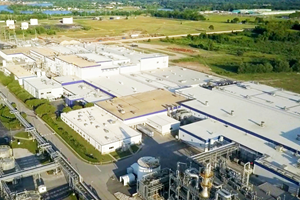Will sequestration ground the F-35?
HPC editor-in-chief Jeff Sloan stands on the U.S. federal budget cliff’s brink and takes a look over the edge at sequestration's potential effects on compistes-oriented U.S. defense spending.
By the time this issue of HPC reaches your mailbox, the 2012 U.S. Presidential election will, thankfully, have come to an end, the world will finally know who will lead this country for the next four years, and a “lame-duck” Congress will attempt to steer the country away from sequestration, the oft-referenced “fiscal cliff,” which, unless replaced with a better alternative, automatically mandates on Jan. 1, 2013, substantial cuts designed to counter the growing U.S. budget deficit.
Sequestration, technically, isn’t a reduction in current spending. Under it, federal spending would see cuts in the rate of spending growth of about $110 billion a year ($55 billion from defense, $55 billion from nondefense) from 2013 to 2022. Looked at another way, it would limit spending increases to about 1.5 percent annually, down from about an 8.2 percent average annual increase for defense and a 6.6 percent average for nondefense spending over the past 11 years.
Although one might think that a reduction in the rate of growth would not be crippling, many federal operations have budgets in place that assume a certain increase in revenue each year. To reduce that to a mere trickle will cause substantial problems. More importantly, inflation alone could wipe out the permitted 1.5 percent spending increase, which would makes sequestration, in many ways, a de facto budget cut.
The U.S. Department of Defense (DoD) is particularly sensitive about sequestration because its spending restrictions would come on top of cuts already budgeted. Predictions of consequences for American defensive readiness — ranging from moderate to dire — have been a major focus of both Presidential campaigns. This has sparked a great deal of pundit analysis: What defense programs are most ripe for cutting if the budget goes over the metaphorical cliff?
Of course, the most expensive, high-profile programs come under the greatest scrutiny. The one leading the DoD’s charge to the cliff’s edge has been the F-35 Lightning II Joint Strike Fighter, Lockheed Martin’s composites-intensive but overdue and over-budget 5th-generation jet fighter. When all is said and done, it could cost $1 trillion over its lifespan — the most expensive defense project ever. To cope with these realities, the DoD has, among other actions, made its dissatisfaction known to Lockheed Martin, stepped up oversight and scaled back orders.
The advantage of the F-35 is its “joint” concept, which spreads cost, manufacturing and risk among several partner countries, each of which is a program customer as well. The disadvantage — as with Boeing’s 787 Dreamliner — is that too many cooks in the kitchen create complexities and multiply complications. Inevitably, there are delays and cost overruns.
Those who believe the F-35’s value is unequal to its cost and, therefore, should be cut, have to answer a big question: Then what? At the Pentagon, U.S. air superiority is a given, not an option. The F-15, F-16 and F-18 have served the country well, but are aging. F-22 production was discontinued in favor of the F-35. For all of its developmental warts, the F-35 is the best — and, in fact, the only — long-term option for America’s and her allies’ air-to-air and air-to-ground combat operations.
Like the 787 before it, the F-35 will have its cadre of doubters and second-guessers until the design and engineering wrinkles are worked out, the complexities are managed and aircraft enter service. But the F-35 represents a new dimension of composites integration in a military craft, embodying a host of resin, fiber, molding and post-mold technologies that, I believe, will make this aircraft a milestone in composites design and manufacturing. And like the 787, it will ultimately justify its developmental growing pains and send another strong signal to the rest of the world about the immense capabilities of composites, ensuring their adoption into many more vehicles and other structures — military and civilian — for many years to come.
Related Content
US Air Force selects Integris Composites ballistic body armor
Cratus Wave armor is thin, lightweight and reduces heat stress, providing buoyant personal protection for the 582nd Helicopter Group.
Read MoreToray Composite Materials America to double Torayca T1100 production capacity
The upgrade to the company’s Decatur, Alabama, carbon fiber plant is set to begin April 2023 in order to support rising demand in defense applications.
Read MoreMaterials & Processes: Fabrication methods
There are numerous methods for fabricating composite components. Selection of a method for a particular part, therefore, will depend on the materials, the part design and end-use or application. Here's a guide to selection.
Read MoreLarge-format 3D printing enables toolless, rapid production for AUVs
Dive Technologies started by 3D printing prototypes of its composite autonomous underwater vehicles, but AM became the solution for customizable, toolless production.
Read MoreRead Next
CW’s 2024 Top Shops survey offers new approach to benchmarking
Respondents that complete the survey by April 30, 2024, have the chance to be recognized as an honoree.
Read MoreComposites end markets: Energy (2024)
Composites are used widely in oil/gas, wind and other renewable energy applications. Despite market challenges, growth potential and innovation for composites continue.
Read MoreFrom the CW Archives: The tale of the thermoplastic cryotank
In 2006, guest columnist Bob Hartunian related the story of his efforts two decades prior, while at McDonnell Douglas, to develop a thermoplastic composite crytank for hydrogen storage. He learned a lot of lessons.
Read More


























